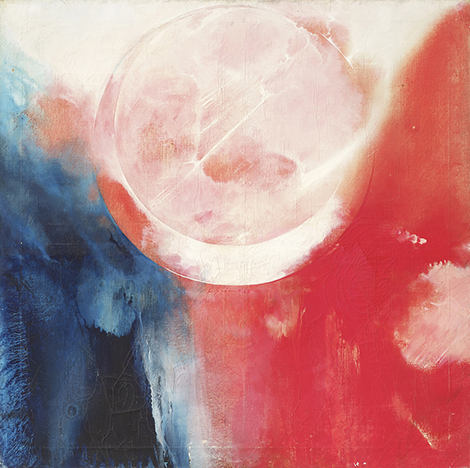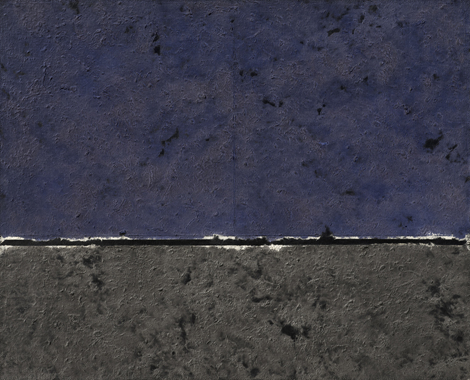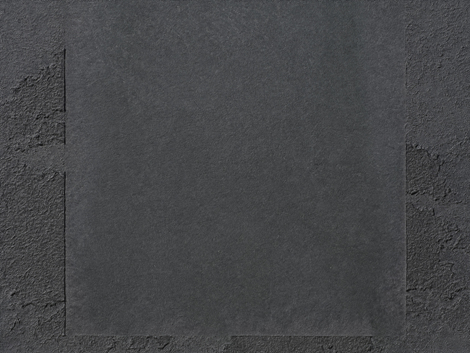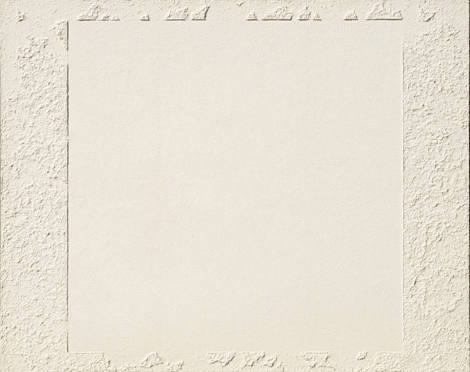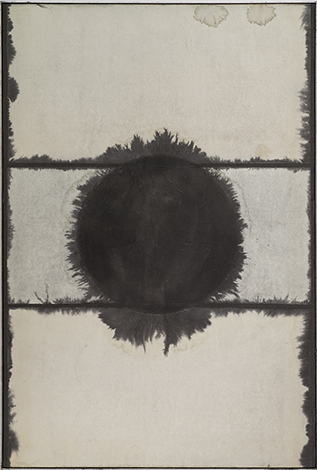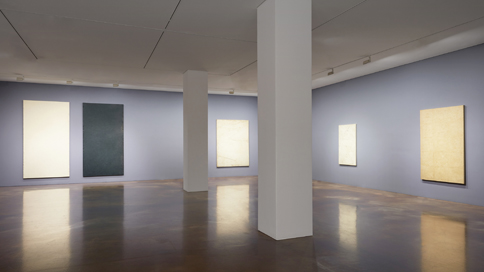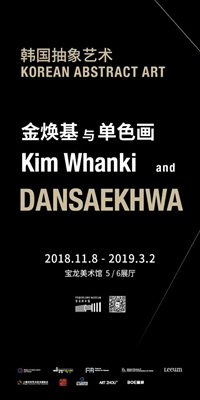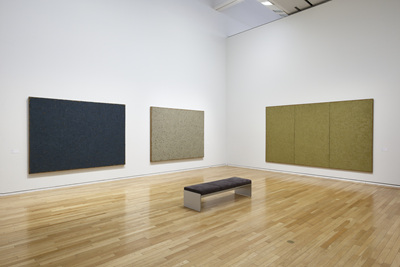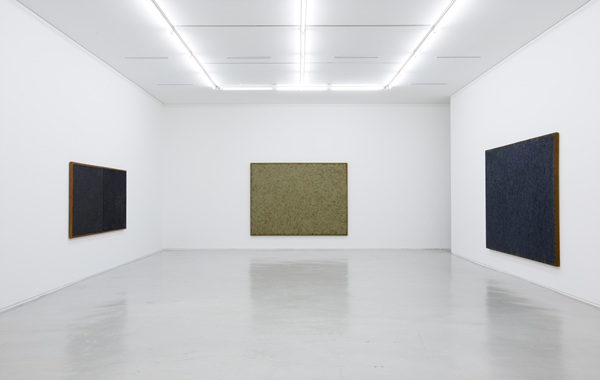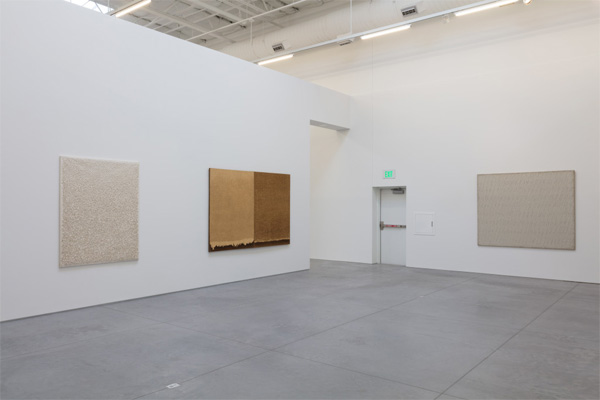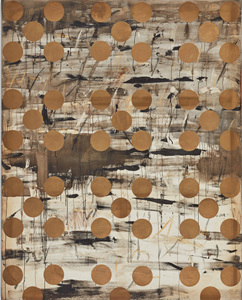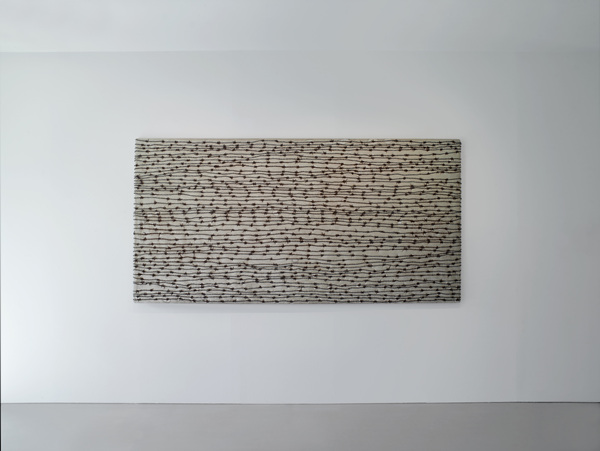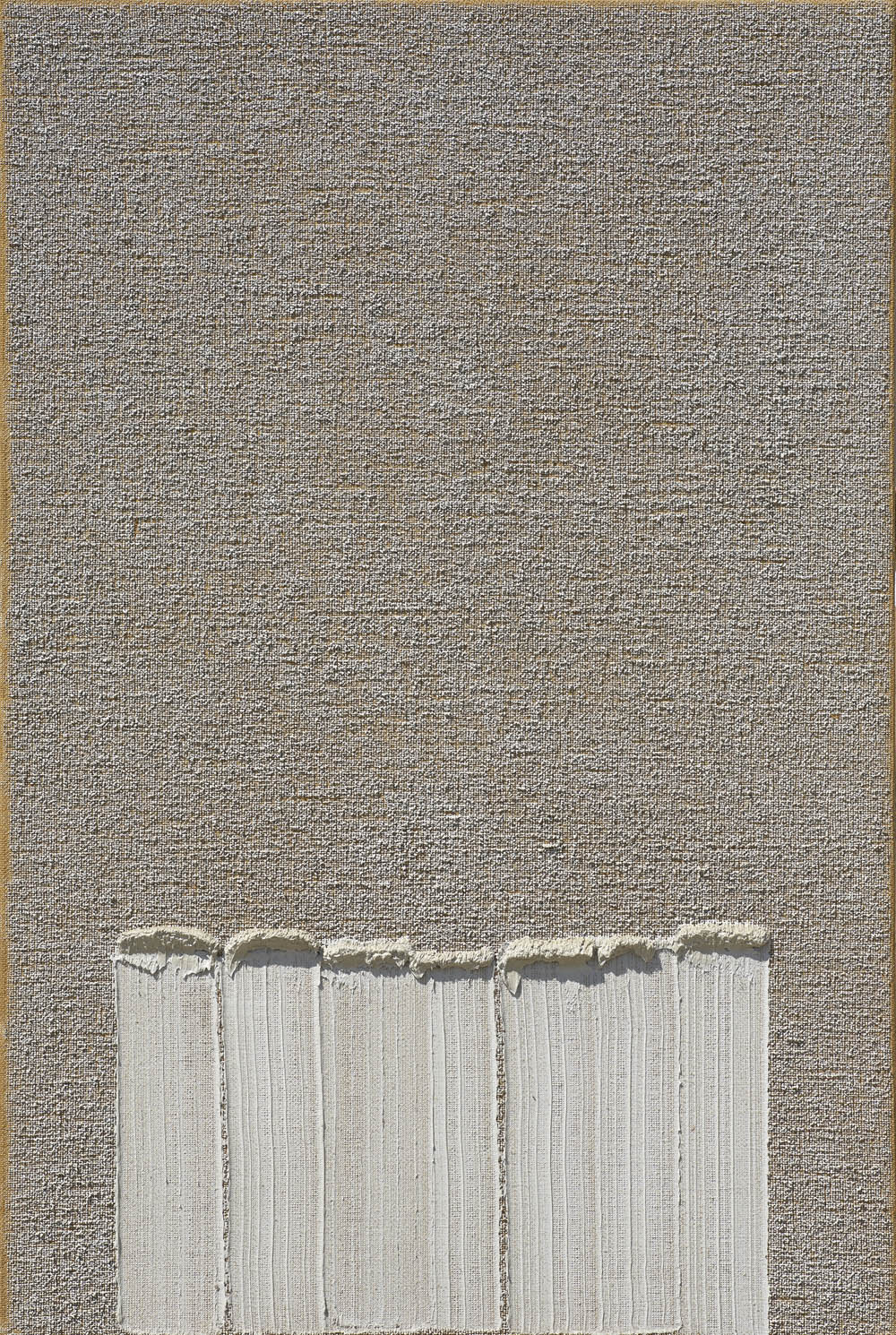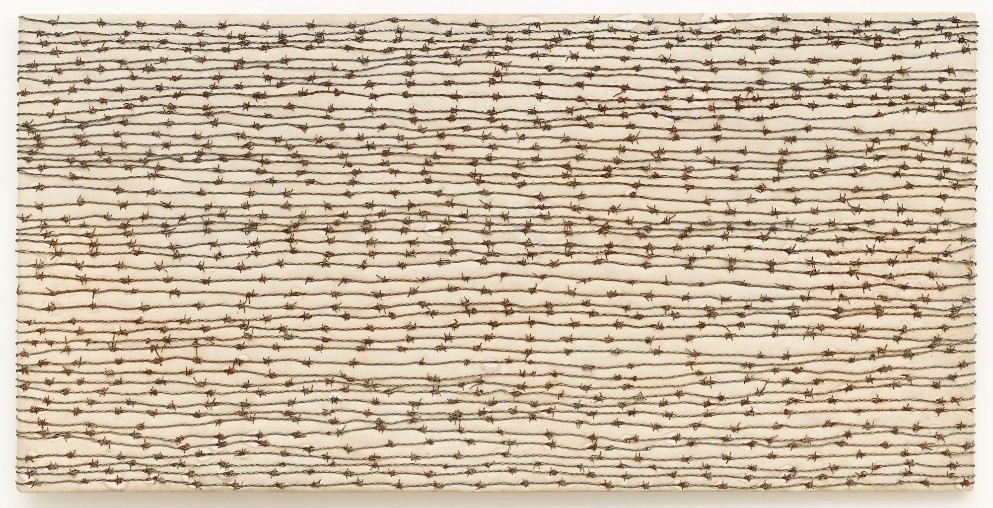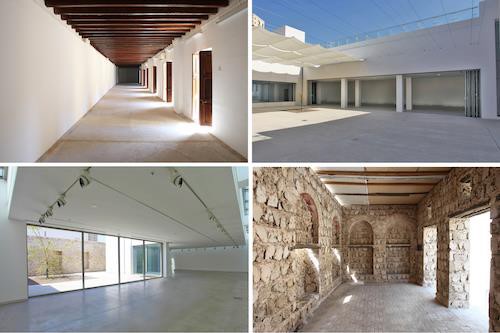 Chung Chang-Sup | KUKJE GALLERY
Chung Chang-Sup | KUKJE GALLERY
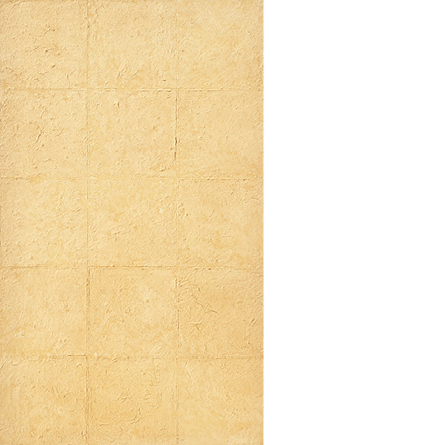
Feb 26, 2016 - Mar 27, 2016
K1 K2
Seoul
INTRODUCTION
Artist: 정창섭 Chung Chang-Sup (1927-2011)
Exhibition Title: Chung Chang-Sup
Exhibition Dates: 2016. 2. 26 - 3. 27
Exhibition Space: Kukje Gallery K1, K2
Opening Hours: Monday – Saturday: 10am-6pm / Sunday, Holiday: 10am-5pm
Website: www.kukjegallery.com
Kukje Gallery is pleased to announce a solo exhibition of Chung Chang-Sup, one of Korea’s most celebrated Dansaekhwa masters. As the first show in 2016 to focus on a Korean artist, Kukje presents a comprehensive overview of Chung’s practice and his lifelong attempt to explore the essence of Korean aesthetics. On view in both K1 and K2, the exhibition showcases thirty works that span his entire artistic practice, and offers the audience a rare opportunity to glimpse Chung’s philosophy that sought to unify the materiality of hanji with the artist’s process, or what he termed the “unity between the thing and the self.”
Chung made his debut in 1953 when he won the special prize for his work Sunset at the second Korean National Art Exhibition (Kukjeon). At this time, his work represented dramatic gestures by using thick matière and bold colors. By the late 1960s, in his Circle series, the artist had begun to apply simple geometry to symbolize circulation and archetypal themes of balance and spirituality in pursuit of visualizing the sensibility and consciousness of Korean culture. Subsequently, Chung began in the 1970s to work on his Return series that utilized the spontaneous expressions of hanji soaked in ink. In this way, the artist further explored how to integrate Korean aesthetics and identity by engaging hanji while making a formative transition from figurative painting to the painting based on materiality.
In the early 1980s, Chung began to use tak as the basis of his practice reflecting his interest in its raw materiality. During this period, Chung first soaked tak in water and kneaded it into a thick paste so that the process naturally determines the right brightness and color of the paste. Then the artist applied the malleable material on canvas, spreading and sculpting it onto the support using his hands. As a result of this careful process, the Tak series combines the materiality of the paper with the artist’s own distinctive performance, allowing for an emphasis on corporeality. Simultaneously, this technique creates the direction of the paper fibers and the delicate and subtle wrinkles that are formed as they dry out, which thus reveals their unique rhythm and physicality. Whereas the subtle tones present the innate yellow color of the paper pulp itself in the Tak series, the artist’s contemplation is manifested in a darker palette including black, indigo blue, and brown in the Meditation series started in the 1990s. Composed of this expressive but limited spectrum of colors within the rigid square format and its use of tak as a sculptural material, the Meditation series illustrates what the artist characterized as “paintings that hanji paints by itself.” These works in this exhibition highlight Chungs’s ability to balance process and materiality with formal rigor, embodying the profound dedication of a sixty-year artistic journey.
Born in 1927 in Cheongju in the North Chungcheong Province of South Korea, Chung Chang-Sup graduated from the Department of Painting, College of Fine Arts, Seoul National University in 1951. He was a professor from 1961 until 1993, and was granted the title of honorary professor upon retirement. Chung had major solo exhibitions at Duson Gallery, Seoul (1984), Tokyo Gallery (1994), and a major retrospective at the National Museum of Modern and Contemporary Art, Gwacheon (2010). He also participated in several group exhibitions including the 2nd Paris Youth Biennale (1961), São Paulo Art Biennial (1965), Working with Nature: Traditional Thought in Contemporary Art from Korea at Tate Liverpool (1992), Dansaekhwa, an official collateral event of the 56th Venice Biennale (2015), and the 12th Sharjah Biennial (2015). Chung received numerous awards including the 13th Joong Ang Cultural Grand Prize (1987) and the Order of Korean National Art Merit (1993). His works are in major collections including the National Museum of Modern and Contemporary Art, Gwacheon; Seoul Museum of Art; Leeum, Samsung Museum of Art, Seoul; Tokyo Metropolitan Art Museum; Hiroshima City Museum of Contemporary Art; M+ Museum for Visual Culture, Hong Kong; and the Guggenheim Abu Dhabi. The artist died in 2011.
국제갤러리는 2016년 첫 한국작가 전시로 단색화의 대표적 작가 정창섭의 개인전을 개최한다. 정창섭은 한국적 미의 구현을 추구한 작업으로 독자적인 작품세계를 구축한 작가이다. 이번 전시는 국제갤러리 1관과 2관에 걸쳐 그의 초기부터 후기 작업까지를 아우르는 작품 30여 점을 선보이며 한지의 물성과 작가 수행의 합일을 이루고자 한 물아합일(物我合一)의 예술관을 경험할 수 있는 소중한 기회를 제공할 것이다.
정창섭은 1953년 제 2회 국전에 출품한 <낙조(落照)>로 특선을 수상하며 화단에 등단하여, 초기에는 거칠고 두터운 마티에르(matière)와 색채로 작가의 제스처를 드러내는 작업을 하였다. 이후 1960년대 후반부터 <환(環)> 연작으로 순환과 원형(元型)을 상징하는 원을 그리며 한국적 감성과 정신을 담아내려 하였고, 이는 1970년대 중반에 이르러 캔버스 위에 한지를 붙이고 자연스런 수묵의 번짐을 표현한 <귀(歸)> 연작으로 발전되었다. 이처럼 작가는 형상 회화에서 출발하여 물성 회화로의 조형적 전환을 이루고, 한지를 사용하면서 한국인의 정체성 표현을 모색하였다.
1980년경부터 정창섭은 근원으로 거슬러 올라가 한지의 원료인 닥을 작업의 주재료로 사용하기 시작했다. 닥을 물에 불린 후 주무르거나 반죽하고 시간에 따라 색의 명도와 채도가 정해지는 준비 과정을 거쳐, 그는 캔버스 위에 닥의 반죽을 올려 놓고 손으로 펴고 매만져 접합시켰다. 이러한 일련의 과정을 통해 제작된 <닥> 연작은 닥의 물성과 작가의 행위, 신체성을 결합시키는 동시에 닥이 마르면서 자연스레 형성된 종이 섬유질의 방향성과 섬세하고 미묘한 주름으로 특유의 리듬과 조형성을 나타낸다. 닥 고유의 누르스름한 색이 그대로 드러난 <닥> 연작에 이어 정창섭은 1990년대부터 그의 침묵의 사유를 검은색, 남색, 갈색 등의 색감으로 표현한 <묵고(默考)> 연작을 제작하였다. <묵고> 연작은 절제된 색과 더불어 견고한 사각의 평면과 그 주위에 입체적으로 형성된 닥의 물성으로 ‘한지가 스스로 그리는 그림’을 선보이며, 작가의 깊은 통찰과 60여 년의 예술적 여정을 통해 이룬 내적 완결성을 보여준다.
1927년 충청북도 청주에서 태어난 정창섭은 1951년 서울대학교 미술대학 회화과를 졸업하였다. 1961년부터 1993년까지 서울대학교 미술대학 교수로 재직하였고, 이후 동 대학의 명예교수로 추대되었다. 작가의 주요 개인전으로는 1984년 두손갤러리 개인전, 1994년 동경화랑 개인전, 2010년 국립현대미술관 회고전 등이 있고, 1961년 파리비엔날레, 1965년 상파울로비엔날레, 1992년 《자연과 함께: 한국현대미술》(테이트, 리버풀), 2015년 베니스비엔날레 공식 병행전시 《단색화》, 제 12회 샤르자비엔날레 등 수많은 그룹전에 참여하였다. 정창섭은 1987년 제 13회 한국현대미술제 예술부문 중앙문화대상, 1993년 대한민국 국민훈장 목련장 등을 수상하였고, 작품의 주요 소장처로는 국립현대미술관, 서울시립미술관, 삼성미술관 리움, 도쿄도미술관, 히로시마미술관, 홍콩 M+ 시각문화미술관, 아부다비 구겐하임미술관 등이 있다. 작가는 2011년 작고하였다.
Exhibition Title: Chung Chang-Sup
Exhibition Dates: 2016. 2. 26 - 3. 27
Exhibition Space: Kukje Gallery K1, K2
Opening Hours: Monday – Saturday: 10am-6pm / Sunday, Holiday: 10am-5pm
Website: www.kukjegallery.com
Kukje Gallery is pleased to announce a solo exhibition of Chung Chang-Sup, one of Korea’s most celebrated Dansaekhwa masters. As the first show in 2016 to focus on a Korean artist, Kukje presents a comprehensive overview of Chung’s practice and his lifelong attempt to explore the essence of Korean aesthetics. On view in both K1 and K2, the exhibition showcases thirty works that span his entire artistic practice, and offers the audience a rare opportunity to glimpse Chung’s philosophy that sought to unify the materiality of hanji with the artist’s process, or what he termed the “unity between the thing and the self.”
Chung made his debut in 1953 when he won the special prize for his work Sunset at the second Korean National Art Exhibition (Kukjeon). At this time, his work represented dramatic gestures by using thick matière and bold colors. By the late 1960s, in his Circle series, the artist had begun to apply simple geometry to symbolize circulation and archetypal themes of balance and spirituality in pursuit of visualizing the sensibility and consciousness of Korean culture. Subsequently, Chung began in the 1970s to work on his Return series that utilized the spontaneous expressions of hanji soaked in ink. In this way, the artist further explored how to integrate Korean aesthetics and identity by engaging hanji while making a formative transition from figurative painting to the painting based on materiality.
In the early 1980s, Chung began to use tak as the basis of his practice reflecting his interest in its raw materiality. During this period, Chung first soaked tak in water and kneaded it into a thick paste so that the process naturally determines the right brightness and color of the paste. Then the artist applied the malleable material on canvas, spreading and sculpting it onto the support using his hands. As a result of this careful process, the Tak series combines the materiality of the paper with the artist’s own distinctive performance, allowing for an emphasis on corporeality. Simultaneously, this technique creates the direction of the paper fibers and the delicate and subtle wrinkles that are formed as they dry out, which thus reveals their unique rhythm and physicality. Whereas the subtle tones present the innate yellow color of the paper pulp itself in the Tak series, the artist’s contemplation is manifested in a darker palette including black, indigo blue, and brown in the Meditation series started in the 1990s. Composed of this expressive but limited spectrum of colors within the rigid square format and its use of tak as a sculptural material, the Meditation series illustrates what the artist characterized as “paintings that hanji paints by itself.” These works in this exhibition highlight Chungs’s ability to balance process and materiality with formal rigor, embodying the profound dedication of a sixty-year artistic journey.
Born in 1927 in Cheongju in the North Chungcheong Province of South Korea, Chung Chang-Sup graduated from the Department of Painting, College of Fine Arts, Seoul National University in 1951. He was a professor from 1961 until 1993, and was granted the title of honorary professor upon retirement. Chung had major solo exhibitions at Duson Gallery, Seoul (1984), Tokyo Gallery (1994), and a major retrospective at the National Museum of Modern and Contemporary Art, Gwacheon (2010). He also participated in several group exhibitions including the 2nd Paris Youth Biennale (1961), São Paulo Art Biennial (1965), Working with Nature: Traditional Thought in Contemporary Art from Korea at Tate Liverpool (1992), Dansaekhwa, an official collateral event of the 56th Venice Biennale (2015), and the 12th Sharjah Biennial (2015). Chung received numerous awards including the 13th Joong Ang Cultural Grand Prize (1987) and the Order of Korean National Art Merit (1993). His works are in major collections including the National Museum of Modern and Contemporary Art, Gwacheon; Seoul Museum of Art; Leeum, Samsung Museum of Art, Seoul; Tokyo Metropolitan Art Museum; Hiroshima City Museum of Contemporary Art; M+ Museum for Visual Culture, Hong Kong; and the Guggenheim Abu Dhabi. The artist died in 2011.
국제갤러리는 2016년 첫 한국작가 전시로 단색화의 대표적 작가 정창섭의 개인전을 개최한다. 정창섭은 한국적 미의 구현을 추구한 작업으로 독자적인 작품세계를 구축한 작가이다. 이번 전시는 국제갤러리 1관과 2관에 걸쳐 그의 초기부터 후기 작업까지를 아우르는 작품 30여 점을 선보이며 한지의 물성과 작가 수행의 합일을 이루고자 한 물아합일(物我合一)의 예술관을 경험할 수 있는 소중한 기회를 제공할 것이다.
정창섭은 1953년 제 2회 국전에 출품한 <낙조(落照)>로 특선을 수상하며 화단에 등단하여, 초기에는 거칠고 두터운 마티에르(matière)와 색채로 작가의 제스처를 드러내는 작업을 하였다. 이후 1960년대 후반부터 <환(環)> 연작으로 순환과 원형(元型)을 상징하는 원을 그리며 한국적 감성과 정신을 담아내려 하였고, 이는 1970년대 중반에 이르러 캔버스 위에 한지를 붙이고 자연스런 수묵의 번짐을 표현한 <귀(歸)> 연작으로 발전되었다. 이처럼 작가는 형상 회화에서 출발하여 물성 회화로의 조형적 전환을 이루고, 한지를 사용하면서 한국인의 정체성 표현을 모색하였다.
1980년경부터 정창섭은 근원으로 거슬러 올라가 한지의 원료인 닥을 작업의 주재료로 사용하기 시작했다. 닥을 물에 불린 후 주무르거나 반죽하고 시간에 따라 색의 명도와 채도가 정해지는 준비 과정을 거쳐, 그는 캔버스 위에 닥의 반죽을 올려 놓고 손으로 펴고 매만져 접합시켰다. 이러한 일련의 과정을 통해 제작된 <닥> 연작은 닥의 물성과 작가의 행위, 신체성을 결합시키는 동시에 닥이 마르면서 자연스레 형성된 종이 섬유질의 방향성과 섬세하고 미묘한 주름으로 특유의 리듬과 조형성을 나타낸다. 닥 고유의 누르스름한 색이 그대로 드러난 <닥> 연작에 이어 정창섭은 1990년대부터 그의 침묵의 사유를 검은색, 남색, 갈색 등의 색감으로 표현한 <묵고(默考)> 연작을 제작하였다. <묵고> 연작은 절제된 색과 더불어 견고한 사각의 평면과 그 주위에 입체적으로 형성된 닥의 물성으로 ‘한지가 스스로 그리는 그림’을 선보이며, 작가의 깊은 통찰과 60여 년의 예술적 여정을 통해 이룬 내적 완결성을 보여준다.
1927년 충청북도 청주에서 태어난 정창섭은 1951년 서울대학교 미술대학 회화과를 졸업하였다. 1961년부터 1993년까지 서울대학교 미술대학 교수로 재직하였고, 이후 동 대학의 명예교수로 추대되었다. 작가의 주요 개인전으로는 1984년 두손갤러리 개인전, 1994년 동경화랑 개인전, 2010년 국립현대미술관 회고전 등이 있고, 1961년 파리비엔날레, 1965년 상파울로비엔날레, 1992년 《자연과 함께: 한국현대미술》(테이트, 리버풀), 2015년 베니스비엔날레 공식 병행전시 《단색화》, 제 12회 샤르자비엔날레 등 수많은 그룹전에 참여하였다. 정창섭은 1987년 제 13회 한국현대미술제 예술부문 중앙문화대상, 1993년 대한민국 국민훈장 목련장 등을 수상하였고, 작품의 주요 소장처로는 국립현대미술관, 서울시립미술관, 삼성미술관 리움, 도쿄도미술관, 히로시마미술관, 홍콩 M+ 시각문화미술관, 아부다비 구겐하임미술관 등이 있다. 작가는 2011년 작고하였다.
WORKS
|
Sympathy 33 |
Tak 86921 |
|
|
Meditation 91224 |
Meditation 97302 |
|
|
Meditation 21707 |
Return One 76-2 |
|
INSTALLATIONS
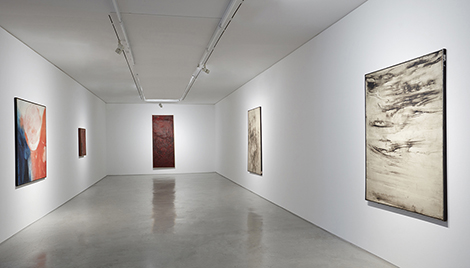
|
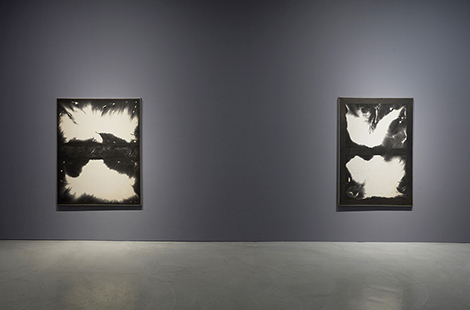
|
|
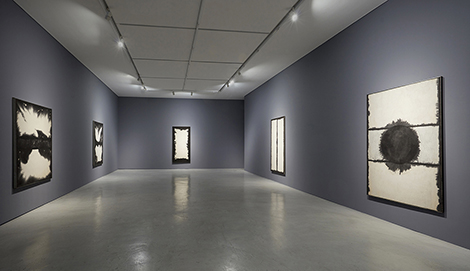
|
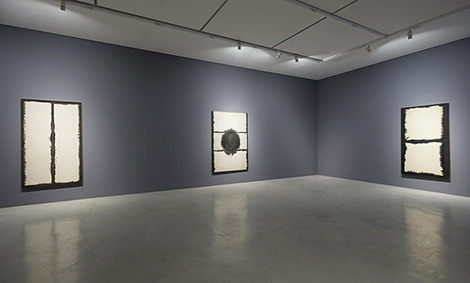
|
|

|
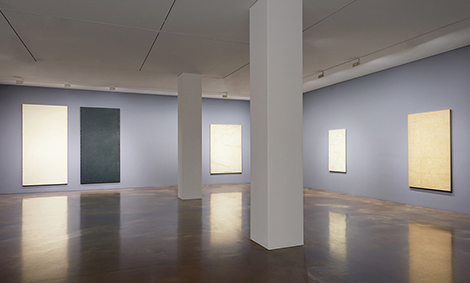
|
|

|
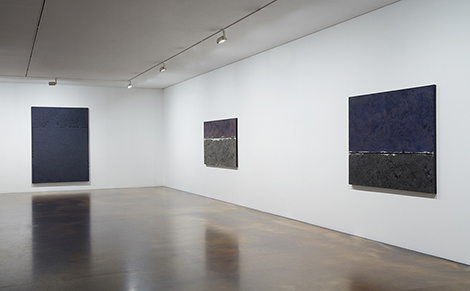
|
|
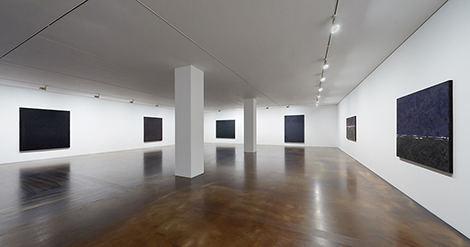
|
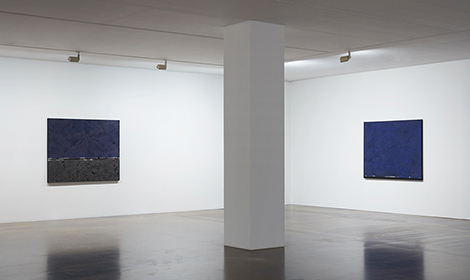
|
|
VIDEOS
|
Installation Video |
PUBLICATIONS
| CHUNG CHANG-SUP |
MEDIA COVERAGE
일간지
‘닥의 화가’ 정창섭
Mar 15, 2016 문화일보
Exploring materiality of paper
Mar 4, 2016 The Korea Times
단색화 열풍은 계속될까
Mar 3, 2016 조선일보
닥종이로 만든 단색화…정창섭 화백 유작전
Mar 1, 2016 한국경제
닥종이로 만든 '그리지 않은 그림'…정창섭 개인전
Feb 26, 2016 연합뉴스
다시 단색화?…국제갤러리 '닥'화가 故 정창섭 개인전
Feb 26, 2016 Newsis
월간지
닥지를 이용한 단색화
Apr, 2016 INTERIORS
정창섭 구도의 길을 찾아서
Apr, 2016 美述世界
물아합일(物我合一) 예술과 만나다
Mar, 2016 Luxmen
Chung Chang-Sup
Jan, 2016 ArtReview Asia
주간지/웹
Chung Chang-Sup
Apr, 2016 artasiapacific
Hanji exhibit opens in Seoul
Mar 10, 2016 KOREA.net
Chung Chang-Sup Brings Dansaekhwa Back to Its Home in Korea
Feb 26, 2016 Blouinartinfo
방송
한국 미술 눈으로 보러왔어요!
Mar 19, 2016 YTN
호흡하며 숨을 쉬는 듯한 작업…'지움의 비움'
Mar 15, 2016 SBS 뉴스
'색의 힘'을 느껴요
Mar 5, 2016 YTN
